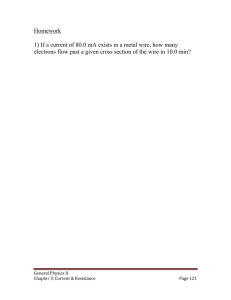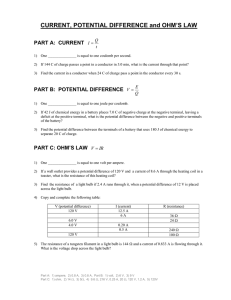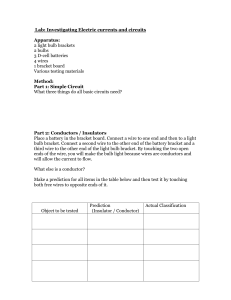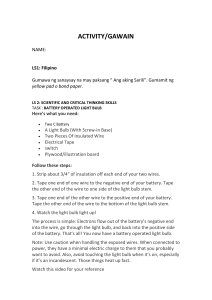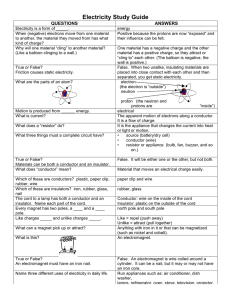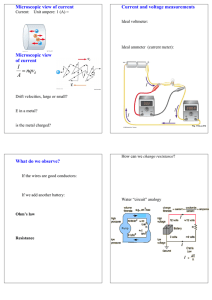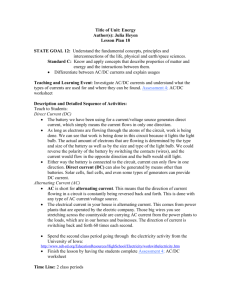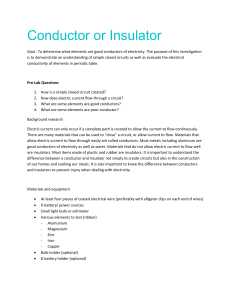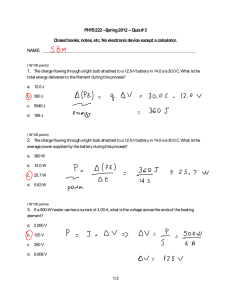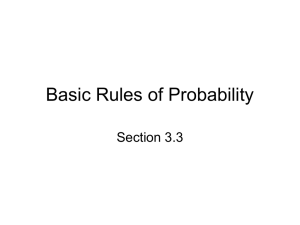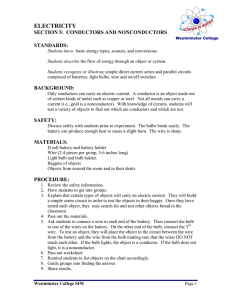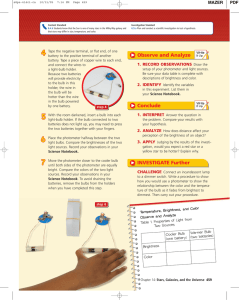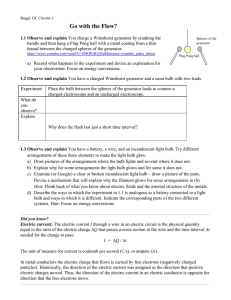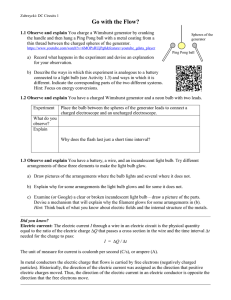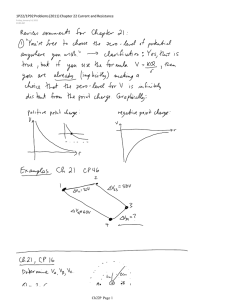Electric Power - WordPress.com
advertisement
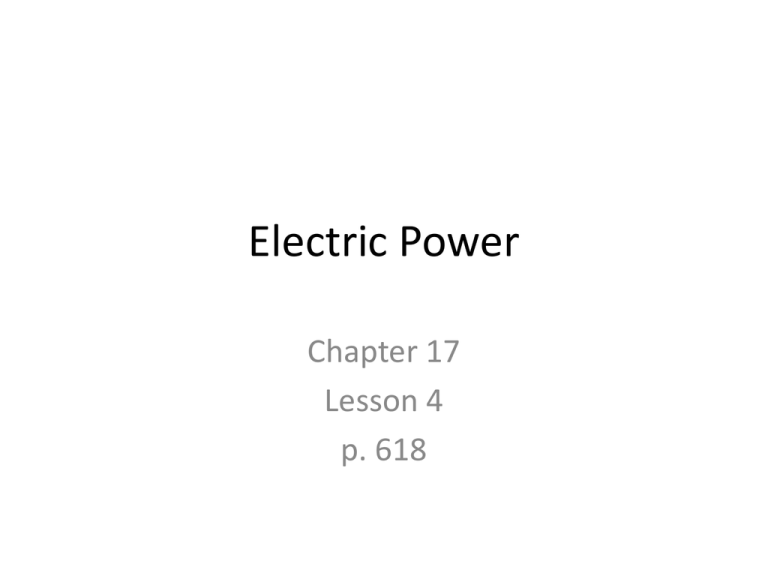
Electric Power Chapter 17 Lesson 4 p. 618 Source of Current: Potential Difference • If no potential difference: - Free electrons in a conductor move randomly when all points in the conductor are the same potential. • If potential difference is applied: - Free electrons in a conductor move from a higher electric potential to a position of lower electric potential. * Potential difference maintains current in a circuit. Batteries and generators supply energy to charge carriers. • Battery – maintains a potential difference across its terminals by converting chemical energy to electric potential energy. • Generator – converts mechanical energy into electrical energy. Current can be direct or alternating. • There are two types of current: 1) Direct current (DC) – charges move in only one direction with negative charges moving from a lower to higher electric potential. - direction of current does not change 2) Alternating current (AC) – the terminals of the source of potential difference are constantly changing sign. - direction of current continually changes Energy transfer Energy transfer • A charge leaves the battery at A with a certain amount of electrical potential energy. The charge loses this energy while moving from B to C, and then regains the energy as it moves through the battery from D to A. Electric Power is the rate of conversion of electrical energy. Electric Power (P) is the rate at which charge carriers convert electrical potential energy to nonelectrical forms of energy. Electric Power = Current x Potential Difference Formulas: (1) (2) (3) P I V PI R 2 P ( V ) R 2 Practice E Problems 1. A 1050 W electric toaster operates on a household circuit of 120 V. What is the resistance of the wire that makes up the heating element of the toaster? (#1, p. 621) 2. A calculator is rated at 0.10 W and has an internal resistance of 22 Ω. What battery potential difference is required for this device? (#3, p. 621) Practice E Problems 3. An electric heater is operated by applying a potential difference of 50.0 V across a wire of total resistance 8.00 Ω. Find the current in the wire and the power rating of the heater. (#4, p.621) 4. The operating potential difference of a light bulb is 120 V. The power rating of the bulb is 75 W. Find the current in the bulb and the bulb’s resistance. (#56,Chapter Review,p. 628) Electric Power • The SI unit of power is the watt, W. • Electric companies measure energy consumed in kilowatt-hour. One kilowatt-hour (kW h) is the energy delivered in 1 h at the constant rate of kW. • Electrial energy is transferred at high potential differences to minimize energy loss. Homework 1. A computer is connected across a 110 V power supply. The computer dissipates 130 W of power in the form of electromagnetic radiation and heat. Calculate the resistance of the computer. (#55, Chapter Review, p. 628) 2. A small electronic device is rated at 0.25 W when connected to 120 V. What is the resistance of this device? (#2, Practice E, p. 621)
